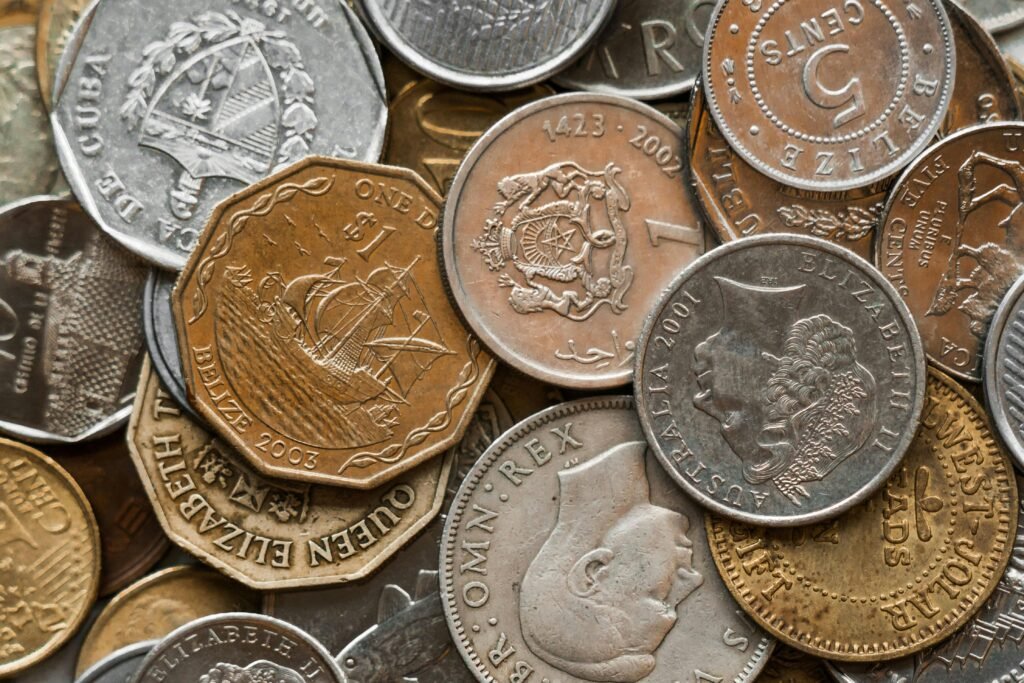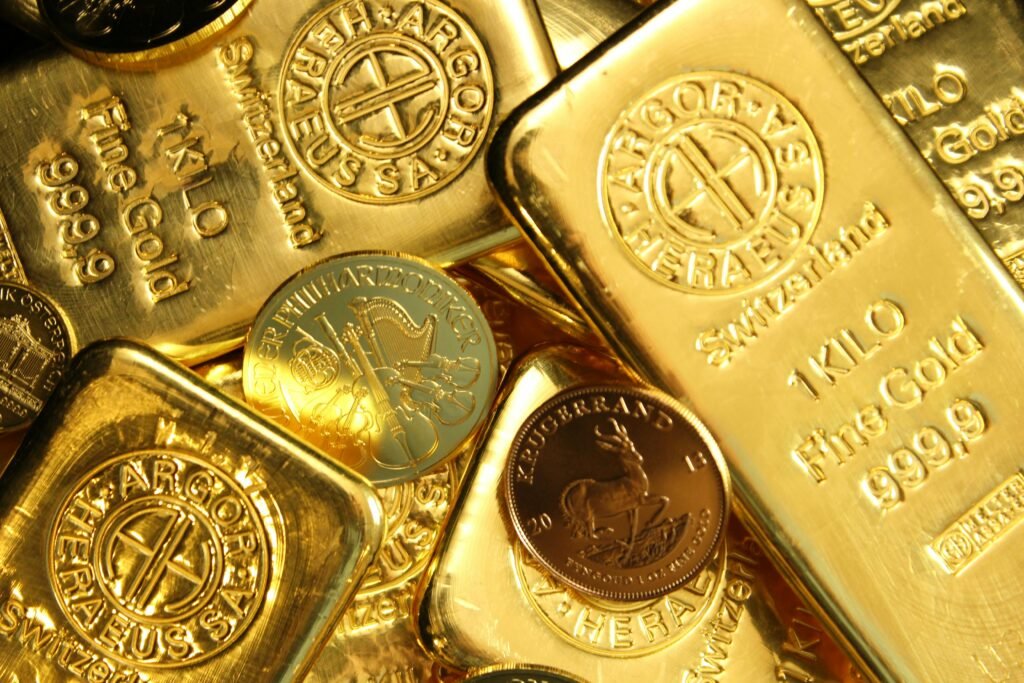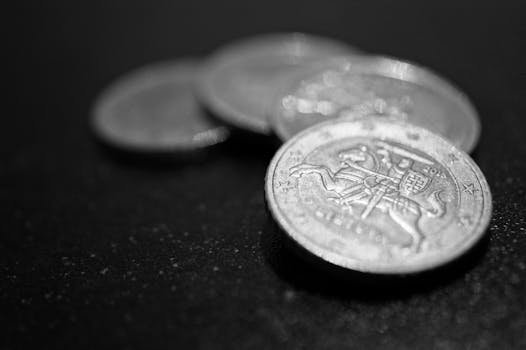Most Liquid Precious Metals by Region
When you need to sell fast—because you’re relocating, raising cash, or simply rebalancing—liquidity beats everything. This guide ranks the most liquid gold and silver coins by region, explains why some products sell in hours while others sit for weeks, and shows you how to read bid-ask spreads like a pro so you can stack with exit confidence.
Introduction: Why liquidity matters when you need to sell
“Buy what you can sell anywhere.” That’s the quiet rule professionals follow. It’s not just about spot price or today’s premium; it’s about how close to spot you’ll get on the way out, how fast the deal closes, and how safe the transaction is. Some coins—American Gold Eagles, Canadian Maple Leafs, Krugerrands, Britannias, Philharmonics—clear almost instantly in major markets at tight discounts to spot. Others (obscure mintages, odd weights, high-premium collectibles) face thin buyer pools, wider spreads, and more haggling.
Liquidity is multi-dimensional: recognition, standardization, market depth, and the bid-ask spread. Your aim is to build a stack that a) any dealer immediately recognizes, b) fits standard weight/purity specs, c) has lots of active buyers, and d) historically carries a narrow discount to spot on buybacks. This guide gives you rankings, tables, and sample portfolios so you can optimize entry and exit—not just one side.
What makes a coin “liquid”?
Recognition and trust
Liquidity begins with instant recognition. Dealers prefer coins they can ID in a second without flipping through catalogues: American Eagle, Maple Leaf, Krugerrand, Britannia, Philharmonic. Recognition isn’t about aesthetics; it’s about counterfeit risk. The more familiar a coin is, the faster a dealer can validate it with dimensions/weight and, if needed, a quick non-destructive test. Recognized designs also attract retail buyers on the secondary market, expanding demand beyond dealers. This recognition shortens the transaction, reduces the need for assay, and protects your time value.
Standardization (weight, purity, design consistency)
The market prizes standard weights (1 oz, 1/2, 1/4, 1/10 oz; 1 kg; 100 g) and high purities (0.999 or 0.9999). Consistent design across years lets dealers quote one bid for “any date”. Deviate into odd sizes (2 oz, 5 oz), non-standard purities, or niche series with frequent design changes, and you’ll feel liquidity decay: fewer automatic bids, more inspection, lower price certainty.
Market depth (number of buyers and sellers)
Liquidity scales with market depth: how many active buyers post bids at any moment. Depth is greatest in North America, UK/EU financial hubs, Switzerland, Singapore, Hong Kong, UAE. Within each region, certain products dominate (e.g., Eagles in the US, Philharmonics/Brittanias/Maples in the EU, Pandas in China). A product with depth sells in minutes; a product without it might require consignment or auction (time-consuming, fee-heavy).
Bid-ask spread as liquidity metric
Bid-ask spread is the cleanest, real-world measure of liquidity. For physical coins, think in discount/premium to spot:
- Tier 1 coins often buy back at spot −0.5% to −2.0% in competitive hubs.
- Tier 2 sits around −2% to −4% (or more in thin markets).
- Tier 3 stretches to −6% to −15% (semi-numismatic, odd sizes, low recognition).
Tighter spreads = more buyers + faster closes + less slippage.
Global liquidity champions
American Gold Eagle (recognized everywhere)
Why it moves: The American Gold Eagle (22k, 1 oz actual gold content remains one troy ounce) enjoys near-universal recognition, especially in North America and the Middle East. Dealers post standing bids; retail buyers trust the brand.
Typical buyback: In the US, competitive desks often bid spot −0.5% to −2% depending on condition and lot size; outside the US, the Eagle still commands tight spreads due to brand power.
Best use: If you may sell in the US or to US-centric dealers abroad, Eagles are close to cash equivalents for stackers.
Canadian Gold Maple Leaf (99.99% purity advantage)
Why it moves: 0.9999 fine, anti-counterfeit features (Radial Lines, Bullion DNA program), and broad global distribution. Particularly liquid in EU and Asia.
Typical buyback: Spot −0.5% to −1.5% in competitive hubs. In some EU markets, Maples can bid better than local favorites due to their 24k purity.
Best use: If you sell across EU/Asia/US and like 24k coins with tight specs.
South African Krugerrand (oldest, massive global market)
Why it moves: The world’s first modern bullion coin (since 1967). Colossal secondary market and deep dealer familiarity.
Typical buyback: Spot −1% to −2%; sometimes tighter in the UK and parts of the EU given decades of circulation.
Best use: International relocation scenarios where you can’t predict the exit market.
Austrian Philharmonic (EU favorite)
Why it moves: Euro-denominated, 0.999 fine, loved across Germany/Austria/EU.
Typical buyback: Spot −0.5% to −1.5% within the EU; spreads widen modestly outside Europe.
Best use: EU-based stackers who want a highly liquid coin aligned with local buyer preferences.
Chinese Gold Panda (Asia dominance)
Why it moves: Strong domestic Chinese demand and brand prestige across Asia. Annual design changes add collectability, but the 1 oz weight and high purity keep it commercial.
Typical buyback: Spot −1% to −3% in Asia hubs; outside Asia, spreads vary with dealer familiarity and demand.
Best use: If you plan exits in China/Hong Kong/Singapore, Pandas offer broad acceptance.
Silver liquidity leaders
American Silver Eagle (premium but liquid)
Why it moves: The most recognized 1 oz silver coin in the US with a devoted retail base.
Typical buyback: Spot + small (yes, sometimes above spot) to spot −1%, depending on silver market conditions and lot size—despite higher retail premiums on the way in.
Best use: If selling in North America, Eagles can recover premiums better than most.
Canadian Silver Maple Leaf
Why it moves: High purity (0.9999), strong anti-counterfeit features, and EU/Asia recognition.
Typical buyback: Spot −0% to −1.5% in competitive hubs.
Best use: Trans-regional silver allocation where you might exit in multiple markets.
Austrian Silver Philharmonic
Why it moves: EU favorite; frequently available in bulk with strong dealer bids.
Typical buyback: Spot −0.5% to −2.0% across EU markets.
Best use: EU sellers who want predictable exits at scale.
Generic rounds and bars (lower premiums, still liquid)
Why they move: Low entry cost; dealers always buy recognizable US/EU refinery rounds/bars.
Typical buyback: Spot −2% to −4% depending on brand and condition (tubes vs loose).
Best use: Accumulation at lowest cost when you accept slightly wider exit spreads than government coins.
Regional liquidity variations
North America: Eagles dominate
In the US and Canada, Eagles/Maples rule. Dealers post daily standing bids, making exit same-day. Krugerrands and Philharmonics also move well, but bid depth is thickest for domestic favorites.
Europe: Philharmonics, Maple Leafs, Sovereigns
The EU loves Philharmonics (gold and silver), with Maples close behind. Britannias and Sovereigns are very liquid in the UK and recognized on the continent. Recognizable LBMA-brand bars sell smoothly.
Asia: Pandas in China, diverse elsewhere
Pandas excel in China; in Singapore/Hong Kong, liquidity is broad across Maples, Eagles, Krugerrands, and top-brand bars. Some markets prefer 24k coins for cultural reasons (jewelry conversion).
Middle East: 24k preference, various sovereigns
Dubai/UAE show deep markets for 24k coins/bars and strong bids on Eagles/Maples/Krugs. Gold souks cater to both investment and jewelry buyers, supporting liquidity.
Australia/NZ: Kangaroos, Kookaburras
The Perth Mint’s Kangaroo is widely recognized; Kookaburra (silver) holds strong collector demand. Internationally, Maples/Eagles still post tighter spreads.
Historical coins with global liquidity
British Sovereigns (worldwide acceptance)
A fractional-gold workhorse. Sovereigns are recognized on multiple continents, trade in vast quantities, and often fetch tight bids in the UK/EU.
When to use: As a divisible, historic, and liquid alternative to modern 1 oz.
Swiss 20 Franc (European standard)
Helvetia/Vreneli 20 Fr coins are well-known across Europe. Spreads can be tight in Switzerland/Germany/Austria.
When to use: EU-centric exits and collectors who appreciate classic gold.
French 20 Franc Rooster/Angel
Another European standard with solid recognition. Liquidity is good in France/EU; outside, bids vary with dealer familiarity.
US $20 Liberty/Saint-Gaudens (numismatic crossover)
Highly recognized in the US with numismatic premiums varying by grade/year. Liquidity depends on condition; common dates trade near melt + a modest premium, rare dates follow the collector market.
Bars vs coins liquidity
Small bars (1 oz, 10 oz): decent liquidity
Pros: Lower entry premiums than coins, easy to stack, assays add confidence.
Cons: Buybacks can be spot −1% to −3%, slightly wider than top coins; resale prefers brand-name bars.
Large bars (100 oz, kilo, 400 oz): specialist market
Pros: Lowest per-ounce premium.
Cons: Fewer retail buyers; sales often routed to refiners/wholesale desks with assay and settlement delays.
Refiner brands matter (PAMP, Valcambi, Credit Suisse)
Top-tier brands command better bids. Unknown/minted-by-small-shops bars face deeper discounts and more testing.
Generic vs branded bars
Generic saves on entry but costs at exit. For big tickets, branded bars reduce friction and can pay for themselves on resale.
Liquidity testing: bid-ask spreads by product
Indicative buyback ranges in competitive hubs (calm markets):
| Product (Gold) | Typical Buy Bid vs Spot | Notes |
|---|---|---|
| 1 oz Eagle / Maple / Britannia / Krugerrand / Philharmonic | −0.5% to −2.0% | Tightest, fastest clears |
| 1 oz Recognized Bars (PAMP/Valcambi/CS) | −0.7% to −2.5% | Brand + assay matter |
| Fractional (1/2, 1/4, 1/10 oz) | −1.5% to −4.0% | Higher entry premium, decent exit |
| Odd weights / obscure issues | −4% to −10% | Thin demand |
| Product (Silver) | Typical Buy Bid vs Spot | Notes |
|---|---|---|
| ASE / Maple / Philharmonic | −0% to −2% | Can be near spot on bulk |
| Generic 1 oz rounds | −2% to −4% | Brand & condition sensitive |
| 10 oz / 100 oz bars | −1% to −3% | Fewer retail buyers, wholesale friendly |
Spreads widen in panic markets or for small lots/poor condition and narrow for bulk, pristine tubes, brand-name bars.
Tightest spreads (1–3%): major government coins
That’s why they’re Tier 1—dealers compete for them.
Moderate spreads (3–6%): recognized bars
Best for low-premium entry, good for wholesale exits.
Wide spreads (6–15%): semi-numismatic, odd sizes
Fun to collect; harder to liquidate at fair value quickly.
Fractional coins: liquidity vs premiums
1/10 oz: highest premiums, decent liquidity
Great for barter/divisibility, but entry cost per ounce is steep. Exit bids are fine for Tier-1 fractionals, yet you rarely recover the high entry premium.
1/4 oz: middle ground
Often the sweet spot for divisibility at tolerable premiums. Wide dealer acceptance makes them practical in mixed stacks.
1/2 oz: better value, good liquidity
Lower % premium than 1/10 or 1/4 oz, still flexible at exit. If you want fractionals that don’t punish you, consider 1/2 oz.
When fractional makes sense (small transactions, divisibility)
Keep a 10–20% sleeve of fractionals for flexibility. Keep your core in 1 oz coins/bars to protect overall cost basis.
Platinum and palladium liquidity
Limited compared to gold/silver
Dealer networks are narrower, retail demand more cyclical, and spreads often wider—especially outside major hubs.
Narrower dealer network
Expect fewer immediate bids, more dependence on specialist desks. Always call ahead with exact SKUs.
Best products: American Eagles, Maple Leafs
Stick to tier-one brands for PGMs; avoid odd mintages and sizes.
Bars often more liquid than coins (industrial demand)
Recognized 1 oz and 1 oz+ bars can move to industrial channels and refiners; know your buyer pipeline.
What to avoid for liquidity
Obscure government issues
If the dealer needs to Google it, expect time and spread to worsen.
Extremely high premium collectibles
Proofs/limited editions are hard to exit at a fair price unless you sell to collectors (time-consuming).
Damaged or cleaned coins
Polishing kills value. Keep coins in tubes/capsules; handle by edges.
Odd weights (2 oz, 5 oz, etc.)
Fewer standing bids, more negotiation, slower clearance.
Non-standard purity
Stick to 0.999 / 0.9999 gold and silver; avoid off-spec items that trigger testing or discounts.
Selling scenarios and optimal products
Emergency liquidation: American Eagles
If you need cash today in North America, nothing beats Eagles (gold or silver) for instant bids and quick wires.
International relocation: Krugerrands, Maple Leafs
If you’re not sure where you’ll exit, Krugs/Maples are globally accepted and offer tight bids in multiple regions.
Estate liquidation: mix is fine if major products
Executors prefer uniform lots of Tier-1 coins and recognized bars. Mixed “curiosity stacks” slow the process and dilute proceeds.
Bartering scenario: junk silver, fractional gold
For small swaps, 90% silver (US junk) and fractional Tier-1 gold provide divisibility without sacrificing too much liquidity.
Pawn shops and quick-sale liquidity
What pawn shops recognize (major coins only)
Expect quick recognition of Eagles/Maples/Krugs; niche items get lowball bids or refusals.
Expected discounts (20–40% below spot)
Pawn shops trade on speed and risk premium. Use only as last resort or for very small lots.
When this option makes sense
Short-term emergency, no dealer access, and you accept the cost of speed.
Online vs local sale liquidity
Online buyback programs (major dealers)
Pros: strong bids, insured shipping kits, transparent pricing. Cons: shipping/assay time (1–5 days) before funds. Excellent for bulk Tier-1 items.
Local coin shop advantages
Same-day money, no shipping risk, relationship pricing. Call 3–5 shops for phone bids; bring tubes and invoices.
Peer-to-peer platforms
Higher potential proceeds, higher risk. Meet at bank branches, verify with non-destructive tests, insist on instant settlement.
Speed vs price optimization
If you can wait a couple of days, online buybacks often beat walk-in bids. If time is critical, LCS wins.
Building a liquidity-focused stack
Core holding: 70–80% highest-liquidity coins
1 oz Eagles/Maples/Britannias/Krugs/Phils as your base. That core guarantees fast exits at fair bids.
Satellite holdings: 20–30% better value/lower premium
Add recognized bars (PAMP/Valcambi/CS) and some generic silver for cost efficiency, accepting slightly wider exit spreads.
Sample portfolio by size
$10k
- 70% in 1 oz Tier-1 gold coins
- 30% in 1 oz recognized gold bars / silver Eagles/Maples
$50k
- 60% Tier-1 gold coins
- 25% recognized gold bars
- 15% silver (Tier-1 + 10 oz bars)
$100k+
- 55% Tier-1 gold coins
- 30% recognized bars (gold)
- 10% silver Tier-1 coins
- 5% fractionals (gold) for divisibility
Liquidity by country: dealer networks
US: extensive dealer network
Thousands of LCSs plus major online buyers. Eagles command the best bids; Maples/Krugs/Phils close behind. Silver Eagles recover premiums better than most.
UK: London gold market
Britannias/Sovereigns dominate; Maples/Phils also strong. Numerous dealers around Hatton Garden and regional hubs; fast Faster Payments settlement.
Germany: strong local market
Philharmonics are king, with robust demand for Maples and branded bars. Cash limits and AML checks apply; bring ID.
Singapore/Hong Kong: international hub
Deep two-way markets with tight spreads on Tier-1 coins and recognized bars. Easy wire settlement, efficient testing, global buyer flows.
Emerging markets: liquidity challenges
Fewer established dealers, more reliance on jewelry channels, wider spreads. In these regions, stick closely to globally recognized products.
Liquidity tiers (at a glance)
| Tier | Examples | Indicative Buy Bid vs Spot | Use Case |
|---|---|---|---|
| Tier 1 (Max) | Gold: Eagle, Maple, Krugerrand, Britannia, Philharmonic; Silver: ASE/Maple/Phil | −0.5% to −2% (gold) / 0% to −2% (silver) | Fastest, best bids globally |
| Tier 2 (Good) | Recognized bars (PAMP/Valcambi/CS), Sovereigns, EU 20 Fr | −1% to −3% | Value buyers w/ exit discipline |
| Tier 3 (Specialist) | Proofs, odd sizes, obscure series | −4% to −15% | Collecting > liquidity |
Liquidity-first buying strategy
If you care about exit speed and price, buy like a market maker: choose Tier-1 coins as your core, round out with recognized bars, keep a small fractional sleeve for divisibility, and avoid illiquid curiosities unless you’re collecting for joy. Always think in spreads, not just premiums. For every purchase ask, “What’s the realistic buy bid if I sell in 24–72 hours in another country?” Build the answer into your cart before you hit “Buy.”
Liquidity supports strategy—it isn’t the strategy. If silver is meant to be a high-beta sleeve around your core, define the role, sizing, and rebalance rules first with Silver as a Satellite Allocation, then use this guide to pick the instruments and venues that minimize slippage and spreads.
FAQs (quick answers)
What are the most liquid gold coins globally?
American Gold Eagle, Canadian Maple Leaf, Krugerrand, Britannia, Austrian Philharmonic.
Do silver coins recover their premiums?
Silver Eagles/Maples/Phils can bid near spot (or occasionally above) in bulk; generics bid a bit below.
Are bars harder to sell than coins?
Small brand-name bars are fine; large/unknown bars face assay and wider discounts.
Are fractionals a bad idea?
No—just costly. Keep a small sleeve for flexibility; keep the core in 1 oz.
How do I check real liquidity?
Call 3–5 buyers in the target region, get live bids for your exact SKU and quantity, and compare.



